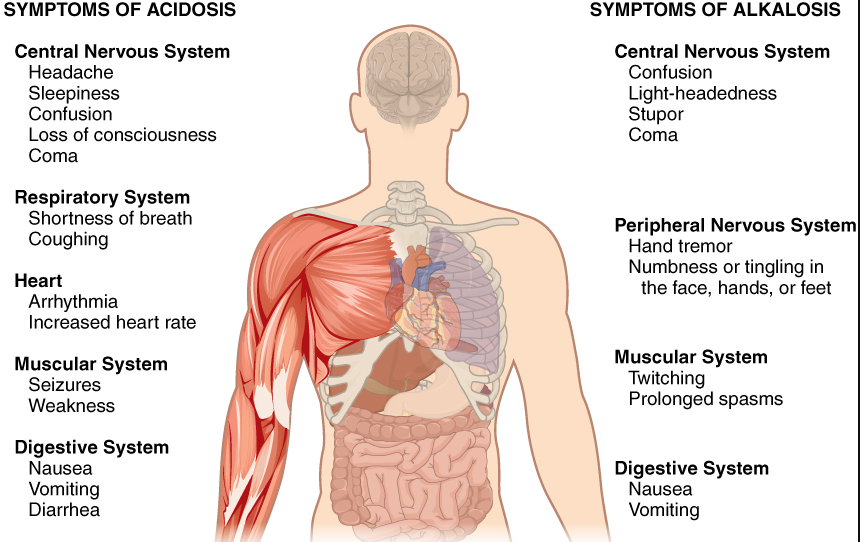BOURSESSENEGAL – Unbalanced pH levels can lead to a range of health issues. Recognizing the symptoms of unbalanced pH levels is essential for maintaining overall well-being. In this article, we will explore the signs that indicate your body’s pH may be off, the factors contributing to this imbalance, and effective ways to restore harmony. By understanding these aspects, you empower yourself to take proactive steps toward better health.
What is pH and Why is it Important?
pH measures how acidic or alkaline a substance is, on a scale from 0 to 14. A pH level of 7 is neutral; values below 7 are acidic, while values above 7 are alkaline. In the human body, maintaining a balanced pH is crucial. Blood, for instance, needs to stay slightly alkaline, around 7.4, to function properly. When your body deviates from this range, various symptoms of unbalanced pH levels may arise, impacting your health and vitality.
Common Symptoms of Unbalanced pH Levels
1. Fatigue and Low Energy
One of the most prevalent symptoms of unbalanced pH levels is fatigue. When your body becomes too acidic, it can lead to feelings of tiredness and low energy. You might find yourself easily exhausted, even after a full night’s sleep. This fatigue often stems from poor nutrient absorption and a buildup of toxins. To combat this, consider adding more alkaline foods, like leafy greens and fruits, to your diet.
2. Digestive Issues
If you experience frequent digestive problems, it may signal unbalanced pH levels. Symptoms such as bloating, gas, or acid reflux are common indicators. An overly acidic environment can hinder proper digestion and lead to discomfort. To improve digestion, focus on consuming foods rich in fiber and probiotics, which can help restore balance in your gut.
3. Frequent Infections
An unbalanced pH can weaken your immune system, making you more susceptible to infections. You may notice that you catch colds or other illnesses more often. This occurs because a healthy pH supports optimal immune function. Strengthening your immune system involves not only a balanced diet but also regular exercise and adequate sleep.
4. Muscle and Joint Pain
Muscle and joint pain can also indicate a pH imbalance. When your body leans toward acidity, it may lead to inflammation, causing discomfort in your muscles and joints. This pain can become chronic if left unaddressed. To alleviate these symptoms, consider incorporating anti-inflammatory foods, like fatty fish, nuts, and turmeric, into your meals.
5. Skin Problems
Your skin often reflects your internal health. Symptoms of unbalanced pH levels may manifest as dryness, acne, or other skin irritations. An overly acidic environment can disrupt your skin’s natural barrier, leading to various issues. To promote healthy skin, use pH-balanced skincare products and maintain a hydrating routine.
Identifying Unbalanced pH Levels
1. pH Testing Strips
One of the simplest ways to check your pH levels is by using pH testing strips. These strips allow you to measure the acidity of your urine or saliva. A consistent reading below 6 can indicate an overly acidic body, prompting you to take action.
2. Blood Tests
A healthcare professional can conduct blood tests to assess your body’s pH levels accurately. This method provides a comprehensive view of your overall health and can help identify potential imbalances. If your results indicate abnormal pH levels, discuss with your doctor the best course of action.
3. Monitoring Symptoms
Keep track of any symptoms you experience regularly. If you notice several signs of unbalanced pH levels, it may be time to investigate further. Pay attention to how your body feels and responds to different foods and lifestyle choices.
Steps to Restore pH Balance
1. Adjust Your Diet
Diet plays a significant role in maintaining pH balance. Focus on incorporating more alkaline foods, such as fruits, vegetables, nuts, and seeds. Limiting processed foods, sugar, and excessive caffeine can help create a healthier internal environment.
2. Stay Hydrated
Proper hydration is essential for maintaining pH balance. Drinking adequate water helps flush out toxins and supports overall bodily functions. Aim to drink at least eight glasses of water a day, adjusting based on your activity level and climate.
3. Regular Exercise
Engaging in regular physical activity can help maintain pH balance. Exercise promotes circulation, reduces stress, and supports metabolic processes. Find an activity you enjoy, whether it’s walking, yoga, or dancing, and make it part of your routine.
4. Manage Stress Levels
Stress can significantly impact your body’s pH levels. Chronic stress leads to increased acidity, affecting your overall health. Practicing mindfulness techniques such as meditation, deep breathing, or yoga can help manage stress effectively.
5. Consider Supplements
In some cases, supplements may support your efforts to balance pH levels. Products like alkaline water, greens powders, or pH-balancing supplements can be beneficial. Always consult a healthcare professional before introducing new supplements to your routine.
Conclusion
Recognizing the symptoms of unbalanced pH levels is vital for maintaining optimal health. By understanding these signs, you can take proactive steps to restore balance in your body. Focus on a nutrient-rich diet, stay hydrated, exercise regularly, and manage stress to support your well-being. If you continue to experience symptoms, consult with a healthcare professional to explore further options. Your health is in your hands, and small changes can lead to significant improvements in how you feel every day.
REFERENCE : https://www.health.com/



